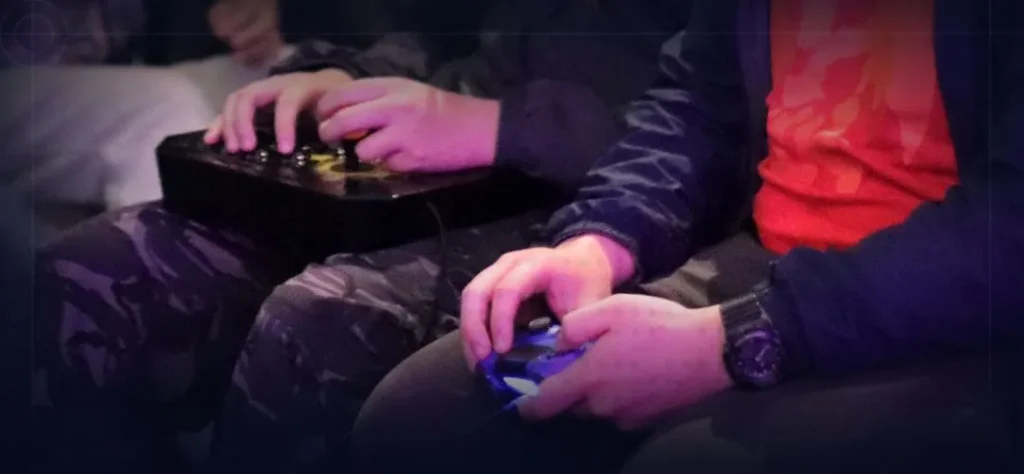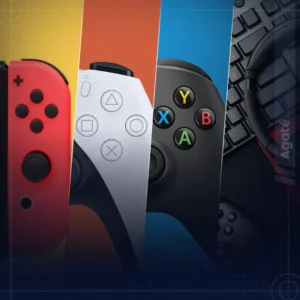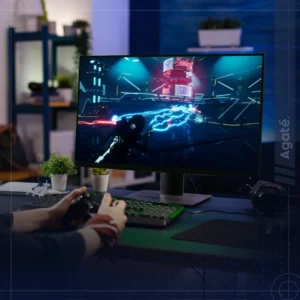
Ah, yes, multi-player games. We all know them, we all love them, and we’ve all spent way too much time and even money on them. But do you ever wonder how multiplayer games came to be and how they changed over time? If you answered yes to any of these questions, then you came to the right place! In this article, we will take you on a journey through the history of multiplayer games, from their humble beginnings to their amazing present and future. So grab your snacks, log in, and let’s begin!
The First Multiplayer Games
The history of multiplayer games goes way back to the dawn of video games when some of the first games were made for two players to play on the same device. One of the earliest video games was Tennis for Two, created in 1958 by William Higinbotham at the Brookhaven National Laboratory. It was a simple tennis simulation game that used an oscilloscope as a display and two controllers with knobs and buttons. The game was meant to show off the lab’s equipment and to entertain visitors. It was one of the first games to use a graphical display and to simulate physics. It was also one of the first games to cause arguments over who won and who cheated.
Another early video game was Spacewar!, created in 1962 by Steve Russell and others at MIT. It was a two-player space combat game that used a PDP-1 computer as a platform and a vector monitor as a display. The game featured two spaceships that could shoot projectiles at each other and maneuver around a star that exerted gravity. The game was widely shared among academic institutions and influenced many later games. It was also one of the first games to cause eye strain and carpal tunnel syndrome.
The first examples of multiplayer real-time games were developed on the PLATO system, a networked computer system designed for education, in the early 1970s. Some of the multiplayer games developed on this system were Empire, a strategic war game; Spasim, an early first-person shooter; and Airfight, a flight simulator. These games were revolutionary because they allowed multiple players to play together in real-time over a network. They were also revolutionary because they caused many students to skip classes and stay up all night.
The first arcade video games also featured multiplayer modes, where players could take turns or play simultaneously on the same machine. Some of the popular arcade multiplayer games were Pong, a table tennis game; Gun Fight, a western-themed dueling game; and Breakout, a brick-breaking game. These games were fun because they were easy to play and addictive. They were also fun because they allowed players to show off their skills and trash-talk their opponents.
The Rise of Networked Multiplayer Games
As computers became more powerful and affordable, and as networking technology improved, multiplayer games started to use different computing systems connected by local area networks (LANs) or wide area networks (WANs), such as the Internet. This allowed players to play together over greater distances and with more players.
One of the pioneers of networked multiplayer games was MUD (Multi-User Dungeon), created in 1978 by Roy Trubshaw and Richard Bartle at Essex University. It was a text-based adventure game that allowed multiple players to explore a virtual world, interact with each other and with non-player characters, and create their own content. MUD was inspired by Adventure, a single-player text adventure game based on Dungeons & Dragons, and Zork, another text adventure game that featured a complex parser and rich descriptions. MUD was influential in creating the genre of massively multiplayer online role-playing games (MMORPGs). MUD was also influential in creating many online friendships, romances, rivalries, and dramas.
To get from Pong to peer-to-peer first-person shooters, we need to jump way forward to 1973 when Maze War was released. A year after Pong, Maze War was a real first-person shooter that connected computers directly to each other, allowing two players to hunt each other down and engage in twisted battles. It was developed by NASA, of all places. In these early days, multiplayer was achieved by hooking up serial cables between two machines, and the internet as we know it wouldn’t become a thing until much later, in 1991.
If you delve into gaming history of any kind, it isn’t long before you run into Doom. In 1993, id Software created a cluster bomb of industry-changing innovations, and networked FPS multiplayer was one of them. Unlike “Maze War” 20 years previously, Doom could connect up to four players over a network, think four actual PCs connected to a local area network or LAN, to play cooperatively or competitively.
Here’s a fun fact
Did you know that many FPS lingos came from Doom?
Doom popularized the terms “frag”, “gib”, “camp”, “spawn”, “lag”, “cheat”, “rage quit”, and many others.
The Transition to Online Multiplayer Games
As the Internet became more accessible and widespread in the mid-1990s, multiplayer games started to use online services and platforms to facilitate matchmaking, communication, and community building among players. Online multiplayer games also became more diverse and complex, offering various genres, modes, features, and experiences.
One of the first online multiplayer games was Ultima Online, created in 1997 by Origin Systems. It was an MMORPG that expanded on the Ultima series of single-player role-playing games. Ultima Online allowed thousands of players to coexist in a persistent medieval fantasy world, where they could create their own characters, explore the land, engage in combat, craft items, trade goods, join guilds, participate in events, and interact with other players and NPCs. Ultima Online set many standards for MMORPGs and influenced many later games. Ultima Online also set many records for online gaming, such as the largest virtual world, the most concurrent players, and the most in-game murders.
Another early online multiplayer game was QuakeWorld, created in 1996 by id Software as an update to Quake, another first-person shooter game. QuakeWorld introduced client-side prediction and interpolation techniques that reduced the effects of network latency and improved the responsiveness and smoothness of the gameplay. It also supported dedicated servers that could host up to 32 players and allowed players to join and leave games at any time. QuakeWorld popularized online first-person shooter games and fostered a competitive gaming scene. QuakeWorld also popularized the use of mods, skins, maps, and other user-generated content.
The Present and Future of Online Multiplayer Games
Today, online multiplayer games are ubiquitous and diverse, offering a wide range of genres, modes, features, and experiences to players around the world. Online multiplayer games are constantly evolving and innovating, incorporating new technologies, trends, and ideas.
Some of the current and emerging developments in online multiplayer games are cross-platform play, where players can play together regardless of their devices; cloud gaming, where players can stream games from remote servers without downloading or installing them; virtual reality, where players can immerse themselves in realistic and interactive environments; and social gaming, where players can connect with their friends and communities through games.
Online multiplayer games have come a long way, and they will continue to grow and change in the future. Online multiplayer games are not only a form of entertainment but also a form of social interaction, expression, and culture.
Are you looking for co-development, art services, or game porting? Look no further than Agate!
Don’t hesitate to get in touch with us today and learn more about how we can help you take your project to exceptional heights.







